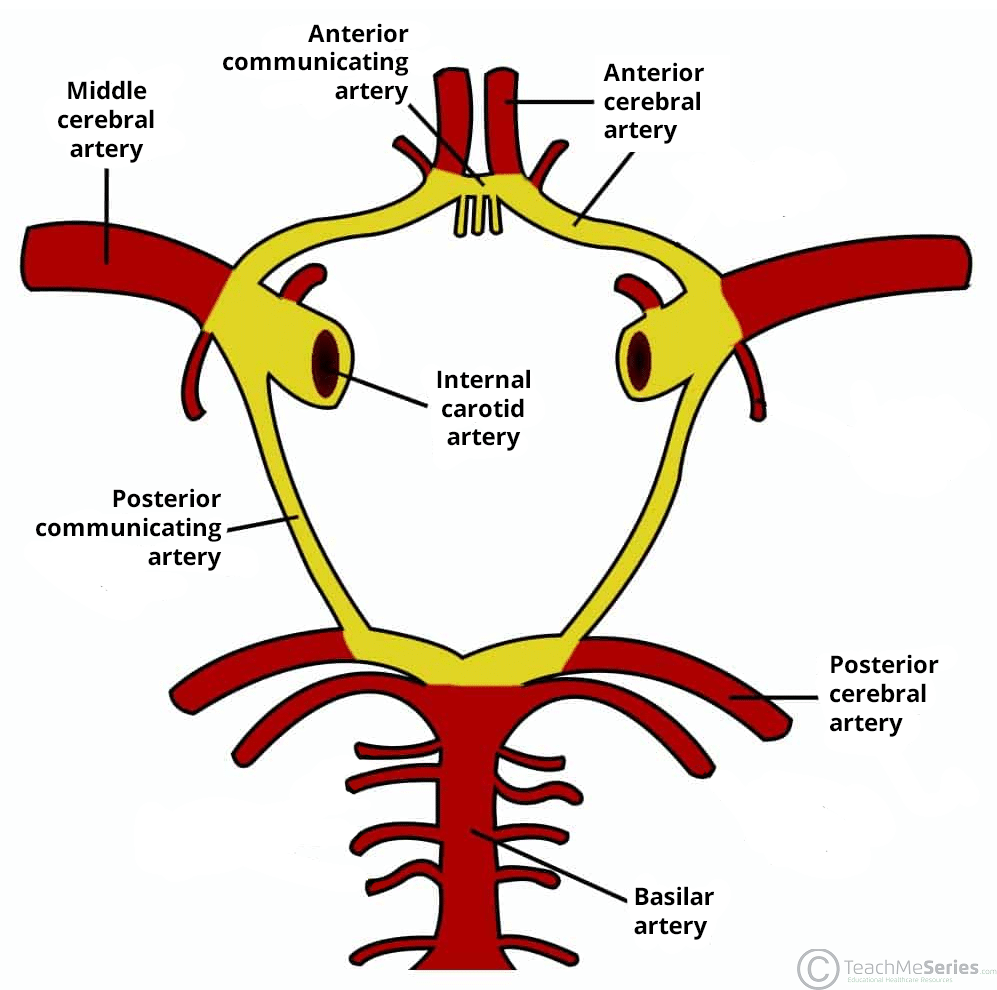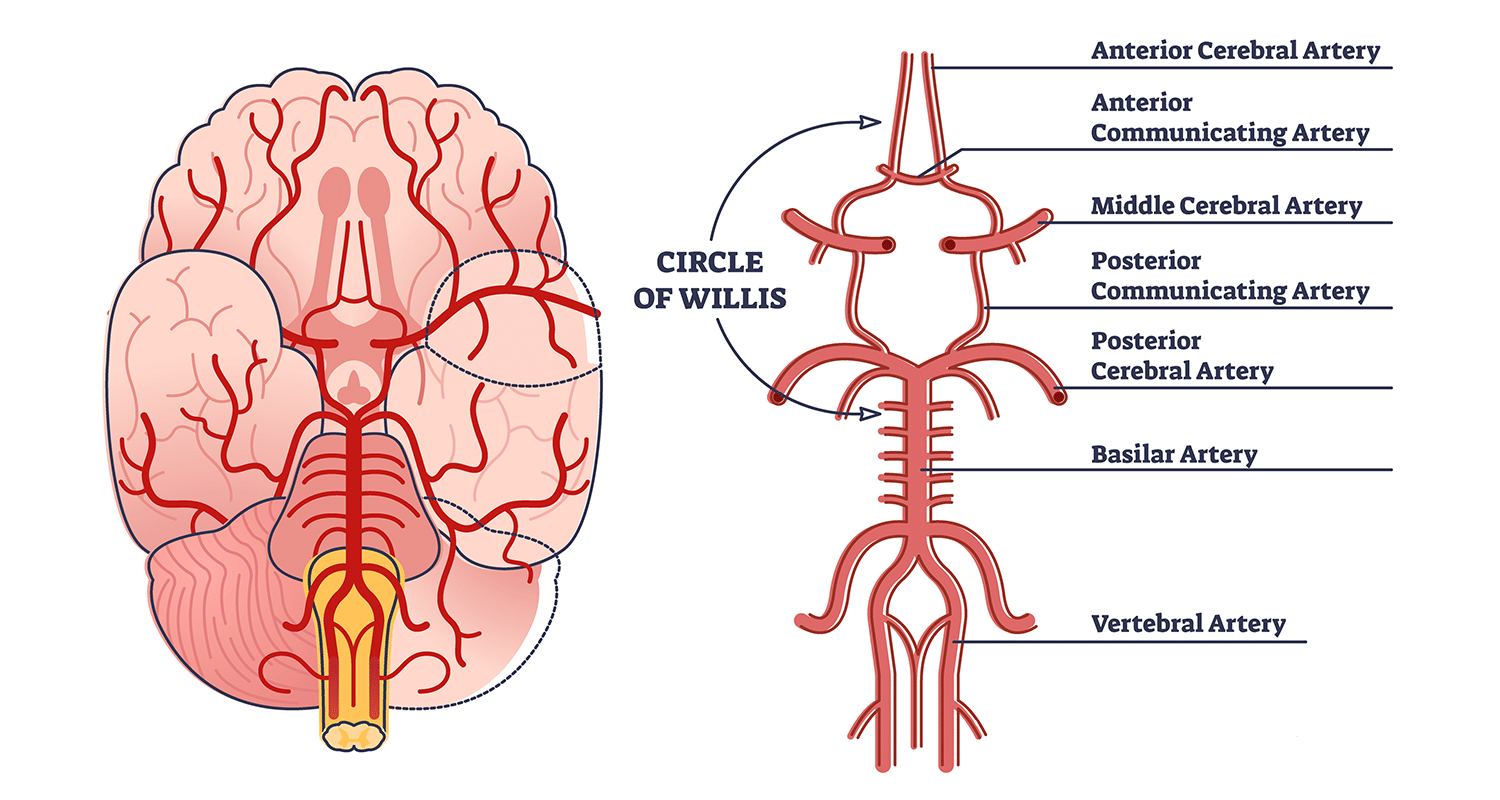The circle of Willis (circulus arteriosus) is an anastomotic arterial ring located at the base of the brain.
It provides a connection between the four main arteries that supply the brain (two vertebral and two internal carotid arteries) — protecting against ischaemia in the event of single vessel occlusion.
Structure
The circle of Willis is located in the subarachnoid space at the base of the brain. It lies in close proximity to the optic chiasm.
It is pentagonal-shaped and formed by the following vessels:
- Anterior communicating artery – a short vessel which connects the two anterior cerebral arteries.
- Anterior cerebral arteries – branches of the internal carotid artery.
- Internal carotid arteries – continues after the contributing to the circle of Willis as the middle cerebral artery.
- Posterior communicating arteries – connects the internal carotid and posterior cerebral arteries
- Posterior cerebral arteries – terminal branches of the basilar artery (which is formed by the union of the vertebral arteries).
Supply
The circle of Willis gives rise to numerus vessels which supply the cerebrum and cerebellum. This can broadly be divided into the anterior circulation and posterior circulation:
- Anterior circulation (internal carotid system):
- Anterior cerebral arteries.
- Anterior communicating artery.
- Middle cerebral arteries.
- Posterior circulation (vertebrobasilar system)
- Posterior cerebral arteries.
- Posterior communicating arteries.
Numerous small branches arise from these vessels (and from the circle of Wilis itself) to supply the brain.

